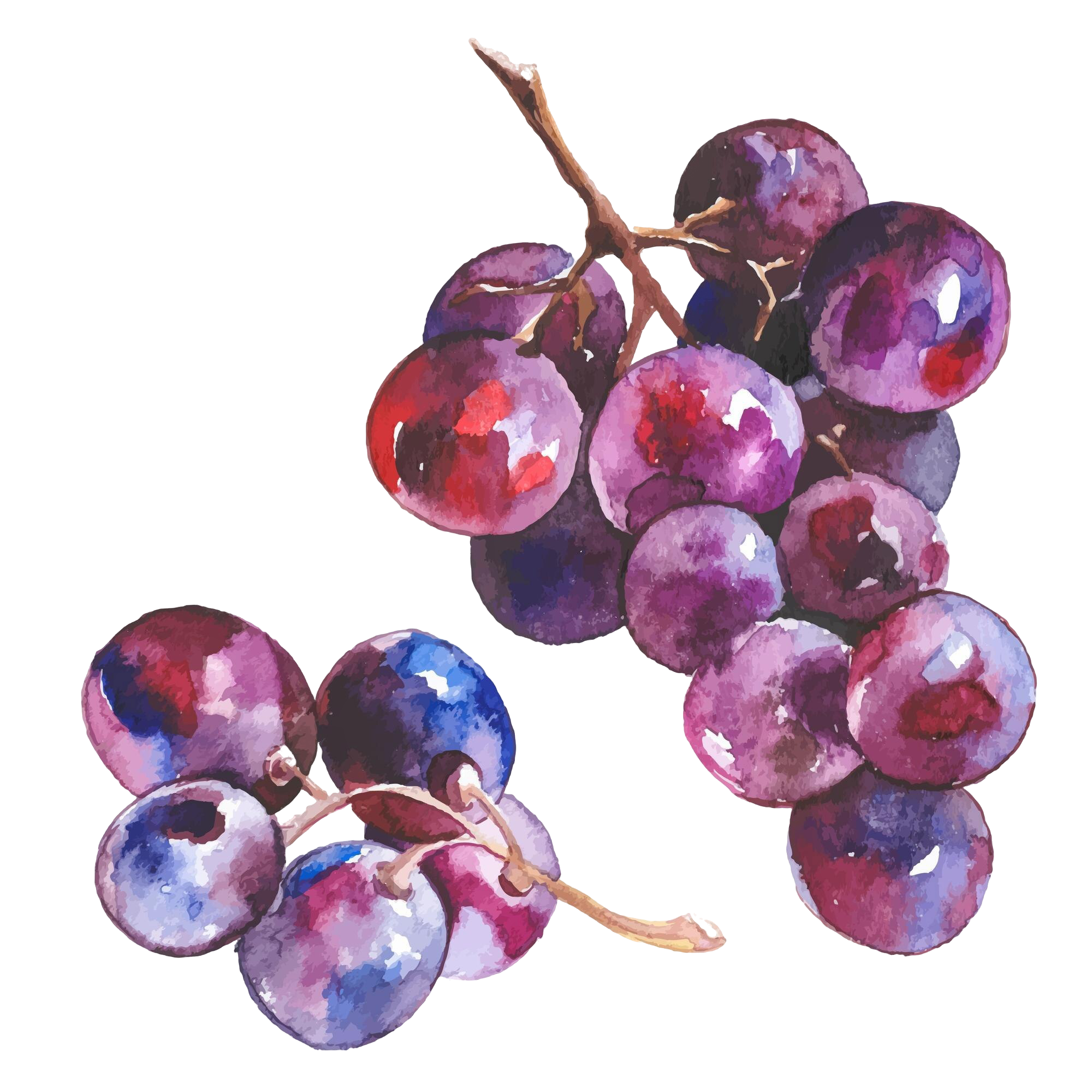Red grape powder, 1 kg
The flavor profile of red grapes is a delicious interplay of sweetness, acidity, and aromatic complexity.
Sweetness: One of the most defining characteristics of red grapes is their sweetness. In general, red grapes are known for a moderate to high sugar content, which contributes to their appealing taste, and rich flavor profile.
Acidity: Acidity plays a crucial role in balancing the sweetness of red grapes. While some may associate the term "acidic" with sourness, in the context of grapes, acidity brings freshness and brightness to the flavor.
Aromatic Notes: The aroma of red grapes is another important aspect of their flavor profile. When you bite into a juicy grape, you're likely to experience an array of aromatic compounds that contribute to its overall taste. Common aromatic notes include:
Berry: Many red grapes, particularly those used in winemaking, possess berry-like flavors such as raspberry, strawberry, or blackberry. These notes can create a rich, fruity profile that is irresistible.
Floral: Some grape varieties have delicate floral aromas, which can add an intriguing complexity. This is especially true for grapes like Grenache, which may evoke hints of rose or violet.
Spice and Earthiness: In certain red grape varieties, particularly those used in vinification, you may encounter savory or spicy notes, such as black pepper or an earthy undertone. These nuances are a result of the vineyard's terroir.
Directions:
For beverages: Measure 1-2 tbsp in 150-240ml liquid.
For liquid concentrate: Measure 1-2 tbsp in 50ml water
Mix thoroughly; sweeten as desired.
The flavor profile of red grapes is a delicious interplay of sweetness, acidity, and aromatic complexity.
Sweetness: One of the most defining characteristics of red grapes is their sweetness. In general, red grapes are known for a moderate to high sugar content, which contributes to their appealing taste, and rich flavor profile.
Acidity: Acidity plays a crucial role in balancing the sweetness of red grapes. While some may associate the term "acidic" with sourness, in the context of grapes, acidity brings freshness and brightness to the flavor.
Aromatic Notes: The aroma of red grapes is another important aspect of their flavor profile. When you bite into a juicy grape, you're likely to experience an array of aromatic compounds that contribute to its overall taste. Common aromatic notes include:
Berry: Many red grapes, particularly those used in winemaking, possess berry-like flavors such as raspberry, strawberry, or blackberry. These notes can create a rich, fruity profile that is irresistible.
Floral: Some grape varieties have delicate floral aromas, which can add an intriguing complexity. This is especially true for grapes like Grenache, which may evoke hints of rose or violet.
Spice and Earthiness: In certain red grape varieties, particularly those used in vinification, you may encounter savory or spicy notes, such as black pepper or an earthy undertone. These nuances are a result of the vineyard's terroir.
Directions:
For beverages: Measure 1-2 tbsp in 150-240ml liquid.
For liquid concentrate: Measure 1-2 tbsp in 50ml water
Mix thoroughly; sweeten as desired.
The flavor profile of red grapes is a delicious interplay of sweetness, acidity, and aromatic complexity.
Sweetness: One of the most defining characteristics of red grapes is their sweetness. In general, red grapes are known for a moderate to high sugar content, which contributes to their appealing taste, and rich flavor profile.
Acidity: Acidity plays a crucial role in balancing the sweetness of red grapes. While some may associate the term "acidic" with sourness, in the context of grapes, acidity brings freshness and brightness to the flavor.
Aromatic Notes: The aroma of red grapes is another important aspect of their flavor profile. When you bite into a juicy grape, you're likely to experience an array of aromatic compounds that contribute to its overall taste. Common aromatic notes include:
Berry: Many red grapes, particularly those used in winemaking, possess berry-like flavors such as raspberry, strawberry, or blackberry. These notes can create a rich, fruity profile that is irresistible.
Floral: Some grape varieties have delicate floral aromas, which can add an intriguing complexity. This is especially true for grapes like Grenache, which may evoke hints of rose or violet.
Spice and Earthiness: In certain red grape varieties, particularly those used in vinification, you may encounter savory or spicy notes, such as black pepper or an earthy undertone. These nuances are a result of the vineyard's terroir.
Directions:
For beverages: Measure 1-2 tbsp in 150-240ml liquid.
For liquid concentrate: Measure 1-2 tbsp in 50ml water
Mix thoroughly; sweeten as desired.



